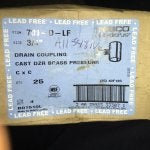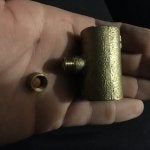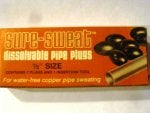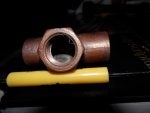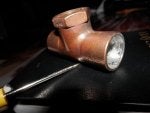You all know the issue well I'm sure: making sure you get the water out of the pipe before sweating copper fittings together. Probably the biggest headache on some jobs for me.
If I'm having a hard time, I'll usually open up all the faucets in the house to break the vacuum, as well as breaking off the water meter, and I'll even put a shop vac on the pipe itself to drain the water. I've even used the old trick of putting bread in the pipe, but that's a last resort. I'm just too poor to afford a SweatJet haha
Do you guys have any other tricks of the trade as to how to get the job done?
If I'm having a hard time, I'll usually open up all the faucets in the house to break the vacuum, as well as breaking off the water meter, and I'll even put a shop vac on the pipe itself to drain the water. I've even used the old trick of putting bread in the pipe, but that's a last resort. I'm just too poor to afford a SweatJet haha
Do you guys have any other tricks of the trade as to how to get the job done?


